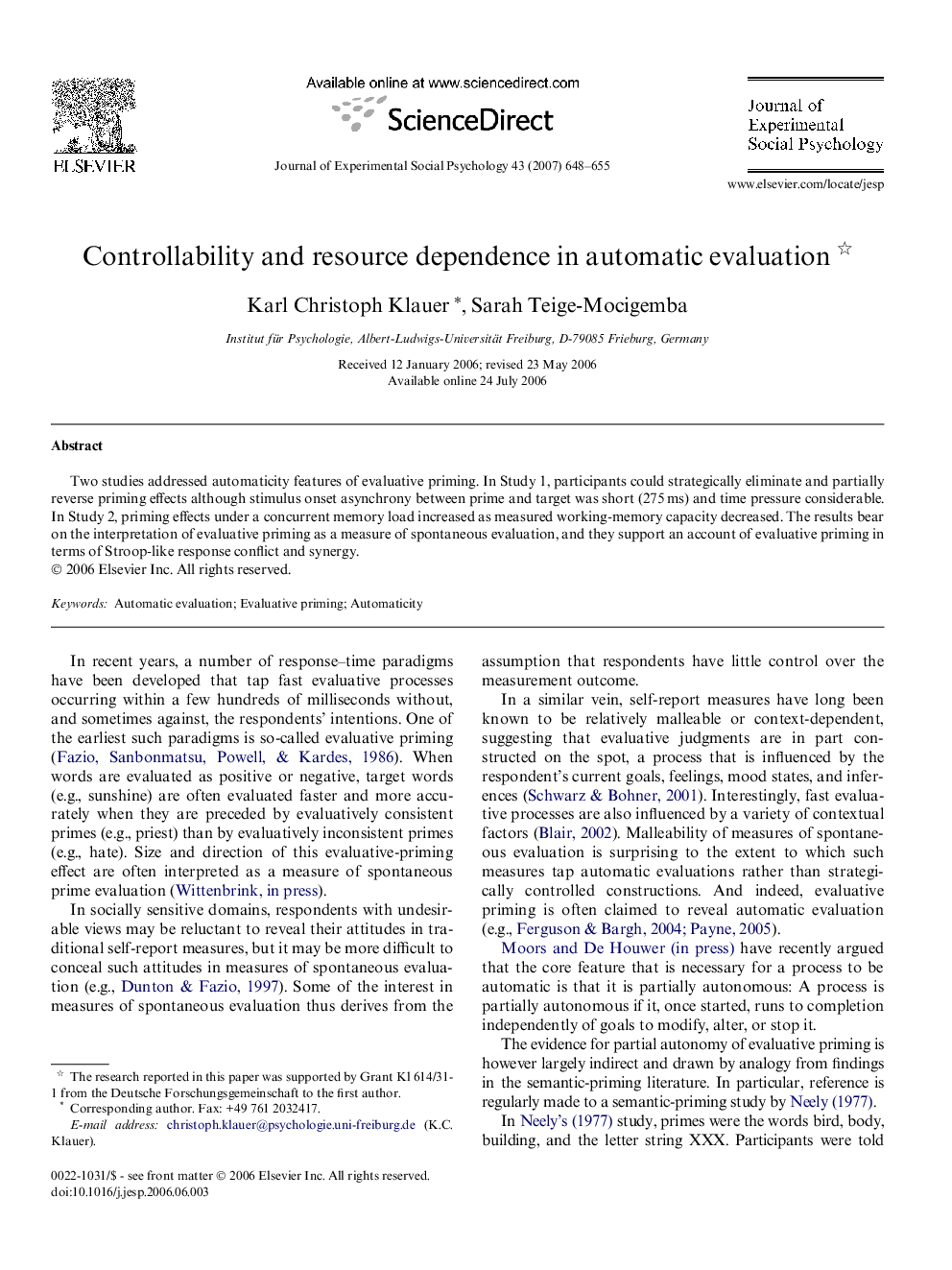| Article ID | Journal | Published Year | Pages | File Type |
|---|---|---|---|---|
| 949082 | Journal of Experimental Social Psychology | 2007 | 8 Pages |
Abstract
Two studies addressed automaticity features of evaluative priming. In Study 1, participants could strategically eliminate and partially reverse priming effects although stimulus onset asynchrony between prime and target was short (275Â ms) and time pressure considerable. In Study 2, priming effects under a concurrent memory load increased as measured working-memory capacity decreased. The results bear on the interpretation of evaluative priming as a measure of spontaneous evaluation, and they support an account of evaluative priming in terms of Stroop-like response conflict and synergy.
Related Topics
Life Sciences
Neuroscience
Behavioral Neuroscience
Authors
Karl Christoph Klauer, Sarah Teige-Mocigemba,
